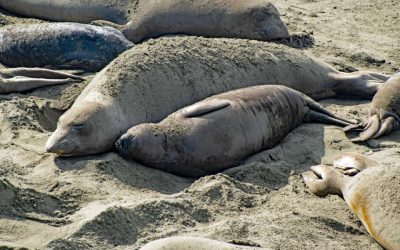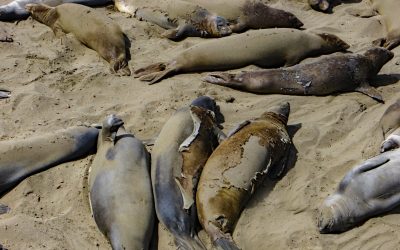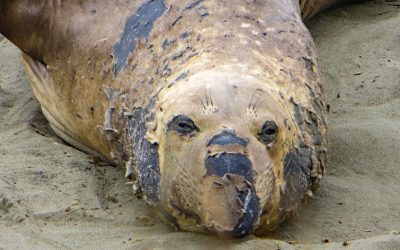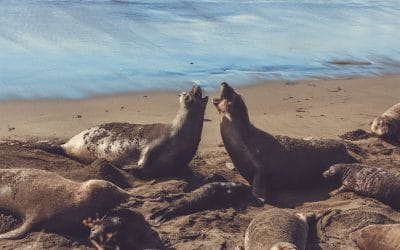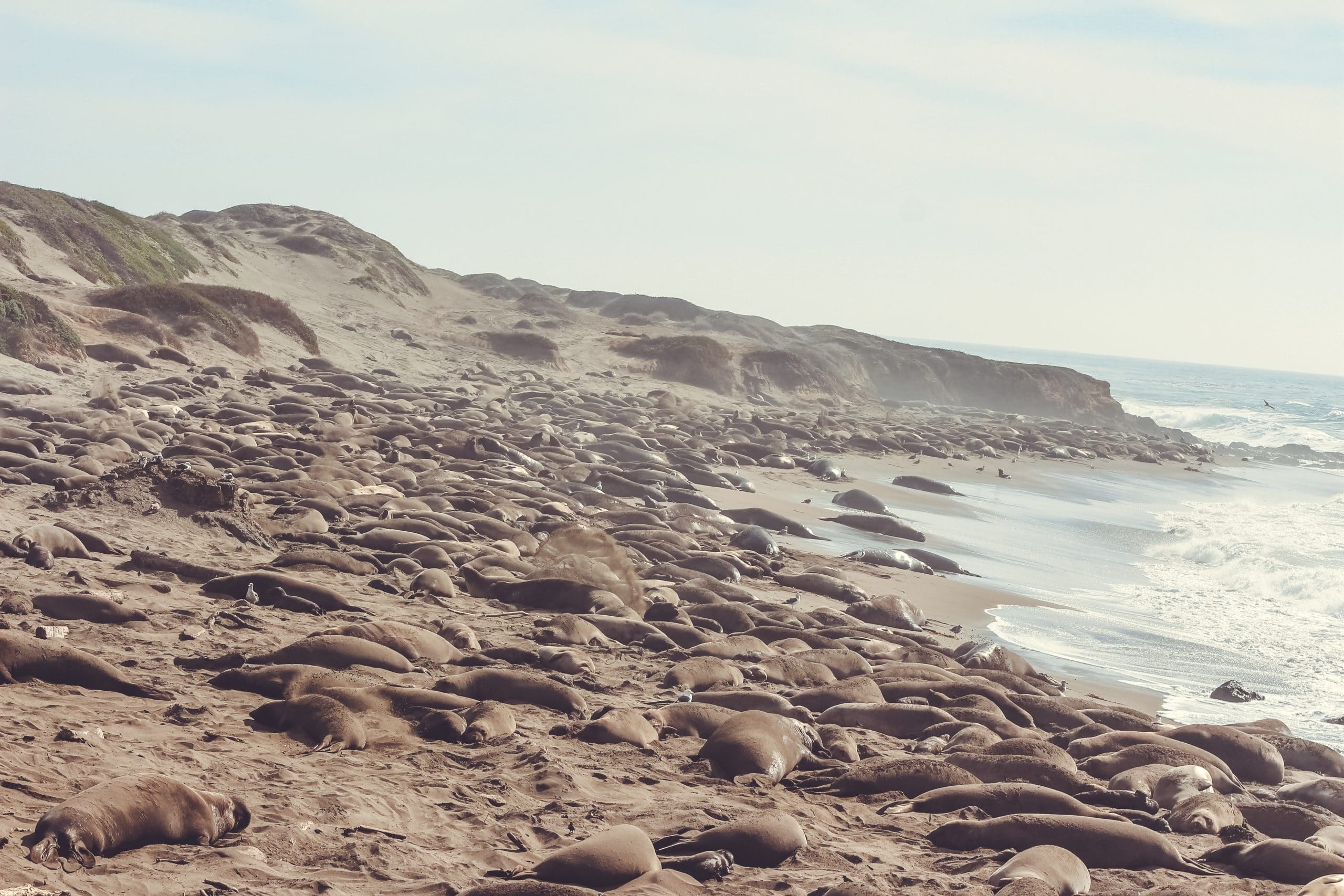
December
Adult male elephant seals weighing 3500 to 5000 pounds (1600 to 2300 kg) begin arriving late in November and will continue to arrive through much of December for the birthing and breeding season. Elephant seals birth and mate in harems. Only the strongest and most aggressive males will reach the rank of alpha, or harem master.
Through threat, intimidation and fights, alpha males establish control over portions of the beach. Their battles may be bloody but are almost never fatal. Harems commonly have 20 to 50 females. The size of the harem depends on the ability of the harem master to defend his territory against neighboring alphas. The loud, hollow, resonant call, unique to each male, is their most reliable way to recognize rivals they have interacted with. Lesser males establish a hierarchy, and the strongest of them may act as lieutenants for the alpha males.
As the pregnant females arrive in December, they choose beach areas that are safe places to raise pups. They will depend on the harem master to protect them from males that might sneak in and disrupt the mothers and pups. As the beach becomes crowded, females will compete for mom/pup space. There will be some new pups on the beach by mid-December.
January
This is the month with the most births. Mothers give birth a few days after arrival. While labor may be long, the actual birth usually takes only a few minutes. Mom immediately turns to bond with the new-born, sniffing, listening, and “talking” in a high-pitched...
February
Birthing peaks in January and continues into February. Mating peaks in mid-February. There may be fights as males try to improve their standing. As their mothers leave the beach to finally break their fast, the weaned pups gather in “pods” near the bluffs, avoiding...
March
Adult males that arrived in December leave the beach. They have lost as much as 40% of their weight, after fasting for over three months. The older weanlings will begin to make their way to the near-shore waters. For those raised on the higher, distant parts of the...
April – May
Adult females that left the rookery after weaning their pups, as well as juveniles that were out at sea all winter, begin arriving late in March. This is the start of the molting season. Growing new skin at sea would cause a tremendous heat loss. Instead, they come...
June – September
In June we begin to see the arrival of males with the first sign of puberty – the growth of the nose (proboscis) which begins at about age five. As the molting season continues, we then see more older males, finishing with the arrival of the adult males in July and...
September – November
Before all the big males have left, the fall haul-out begins. Juveniles of both sexes return from their post-molt migration. They have been at sea since their molt in the spring. As youngsters, they come ashore in the fall, but as they grow into adults, they will make...


